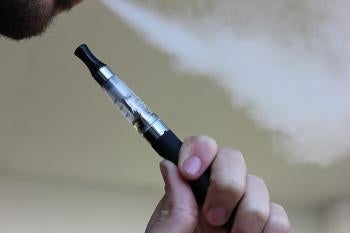Despite recent pressure from the high-powered, tobacco-backed vaping industry, Australia recently ruled to keep nicotine-laden e-cigarettes illegal in its country.
E-Cigarettes with Nicotine Ruled Illegal in Australia
A leader in the fight against smoking, Australia classifies nicotine as a poison and has a ban on e-cigarette products that contain the substance. Vaping fluids that do not contain nicotine are allowed for sale in the country. Several countries have gone even further and banned all use of e-cigarettes including Brazil, Singapore, the Seychelles, Uruguay, and Norway. Much like Australia, Canada has declared only nicotine e-cigarettes illegal.
Smoking has been on a continuous decline for over two decades in Australia. However, medical experts believe that decline may be stymied by international use of nicotine e-cigarettes and efforts to repeal the laws banning nicotine in Australia.
It is well known that nicotine is extremely addictive and that tobacco companies manufactured cigarettes with high levels of nicotine to keep people addicted and increase cigarette sales.
Now, those same tobacco companies are trying to re-position themselves as health advocates against smoking through the introduction of yet another device that maintains nicotine addiction.
Australia, at least, is allowing none of this. It has chosen to maintain its ban against nicotine e-cigarettes despite arguments by vaping advocates that they could be helping smokers give up the “habit.”
Medical experts in Australia maintain there is no evidence e-cigarettes help smokers quit and legalization of addictive nicotine e-cigarettes could affect efforts to stop the negative health risks associated with smoking and nicotine use.
No Evidence That E-Cigarettes Work as a Deterrent
In a July 2017 release by the Australian Medical Association, AMA President, Dr. Michael Gannon, said “the growth in e-cigarette products internationally has provided sections of the tobacco industry with the opportunity to rebrand themselves as part of the effort to reduce smoking – but there is no evidence that e-cigarettes work as a deterrent.”
The vaping industry continues to deny research showing that the liquids and vapor from e-cigarettes are harmful. They also continue to deny that the product may have manufacturing defects that result in explosions.
While it may be easy to present evidence of conflicting studies between private medical university studies, it is harder for the vaping industry to question government studies of the same nature. Australia is particularly vigilant on the war against smoking and decided to put its government resources behind e-cigarette research.
The National Measurement Institute (NMI) for the Australian Competition and Consumer Commission (ACCC) analyzed safety claims made by e-cigarette retailers. Instead of a “safer” product, the NMI discovered that vapor from e-cigarettes contained formaldehyde and acetaldehyde—both known to cause cancer in humans. These and other toxins aren’t just in the liquid as shown in other studies, but also evident in the inhaled vapor.
The NMI study was instrumental in a lawsuit and penalties against three e-cigarette retailers for false claims and breach of the Australian Consumer Law. The advertisers claimed their products “did not contain any harmful carcinogens”—a claim proved to be false.
AMA Says E-Cigarettes Must Remain Illegal
The Australian Medical Association (AMA) is also publicly against any change in the law. In a July 2017 submission to the Standing Committee on Health, Aged Care and Sport Inquiry into the Use and Marketing of Electronic Cigarettes and Personal Vaporisers in Australia, the AMA stood firm on its position that nicotine e-cigarettes must remain illegal.
In addition to information on health risks, the report referenced statistics on Australia’s smoking cessation efforts and opinions that changing the law would negatively affect the health of Australians.
According to the AMA Submission, Australia decreased the percentage of smokers in its country by 24.8 percent since 1991, to 12.8 percent in 2015 (just over 12 million people). The U.S. rate in 2015 was 15.1 percent or 36.5 million people.
The report also cited a troubling trend reported by the Cancer Council of Australia. The report showed the percentage of Australians using legal, non-nicotine-laced, e-cigarettes had doubled in each and every year since 2010. If nicotine products were allowed, this doubling trend would likely increase due to the addictive power of nicotine.
Dr. Gannon emphasized in his press release that Australia “must not allow e-cigarettes to become a socially acceptable alternative to smoking.” Australia legal authorities agreed and ruled to keep nicotine-laced e-cigarettes illegal.



 />i
/>i
